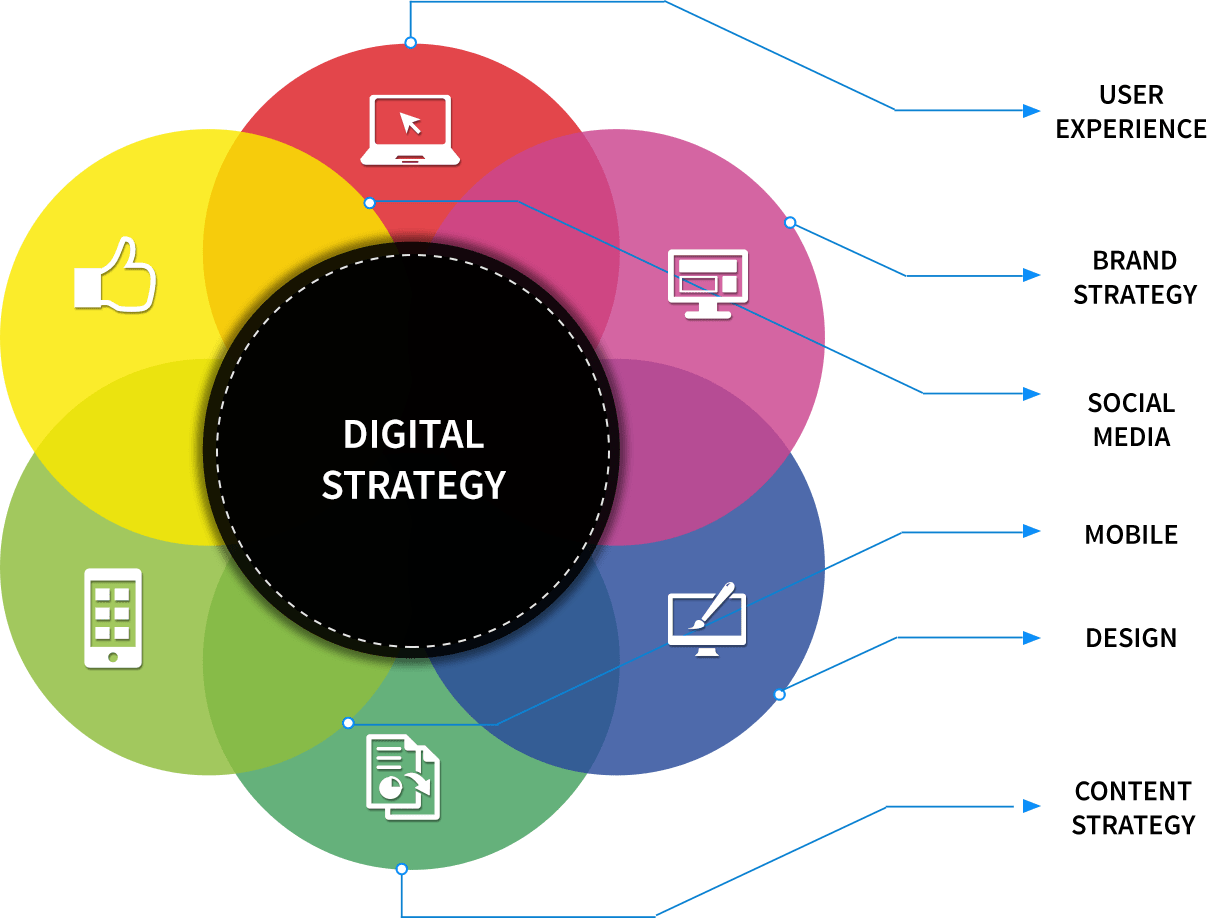Digital Strategy
Digital strategy focuses on using technology to improve business performance, whether that means creating new products or reimagining current processes. It specifies the direction an organization will take to create new competitive advantages with technology, as well as the tactics it will use to achieve these changes. This usually includes changes to business models, as new technology makes it possible for innovative companies to provide services that weren’t previously possible.

It’s important to remember that digital strategy is both a concept and a thing — that is, a digital strategy should eventually lead to the creation of a concrete plan or roadmap. While you can keep changing the specific tactics you’ve decided to pursue, there should also be a clear commitment to your understanding of what digital means for your company.


Common Elements of Digital Strategy
This is arguably the most important part of creating a digital strategy, but choosing the right person will depend on company culture, structure and priorities. Whether companies place leadership with the CEO or an appointed Chief Digital Officer, the leader’s influence will need to match the scope of digital strategy; otherwise, it will be difficult to create the full buy-in from each department necessary to make effective changes.
ompanies would do well to categorize their potential threats and opportunities in digital business, then compare these against their own purpose. This clarifies whether a proactive or defensive stance needs to guide new initiatives.
Digital strategy often incorporates a process for assessing whether new technology will really complement or grow the current business. If you fear that your company is already behind on digital, it can be tempting to rush into a project without looking at how it fits your current strategy. By taking a measured approach, you can avoid wasting resources on initiatives that don’t align with your business’s needs and priorities.
